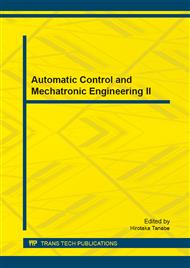p.479
p.483
p.488
p.494
p.498
p.502
p.506
p.510
p.515
Seal Analysis and Optimization of Large Diameter Gate Valve Based on ANSYS
Abstract:
Aiming at the leakage problem on the top of gate valve, the finite element method is used to analyze the gate valves seal face and body, as well as the distributing laws of the stress, deformation and seal pressure are obtained. The shutter is simplified as the circular plate simply supported on the whole circle, and the gate valve is optimized according to the relevant formula to meet sealing requirement. The results show that: the combination of the numerical simulation and theoretical calculation, not only the more accurate theoretical basis for the optimization of the large diameter gate valve can be provided, but also the time of the development and design can be shorten greatly.
Info:
Periodical:
Pages:
498-501
Citation:
Online since:
September 2013
Authors:
Keywords:
Price:
Сopyright:
© 2013 Trans Tech Publications Ltd. All Rights Reserved
Share:
Citation:


